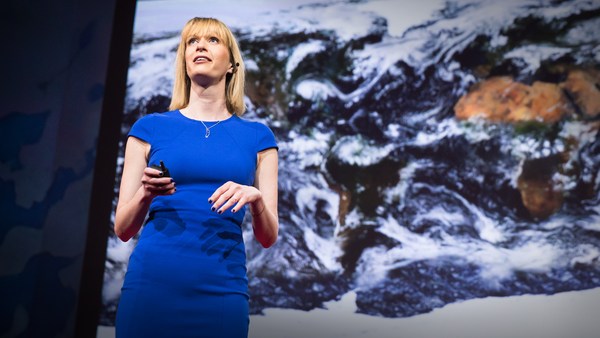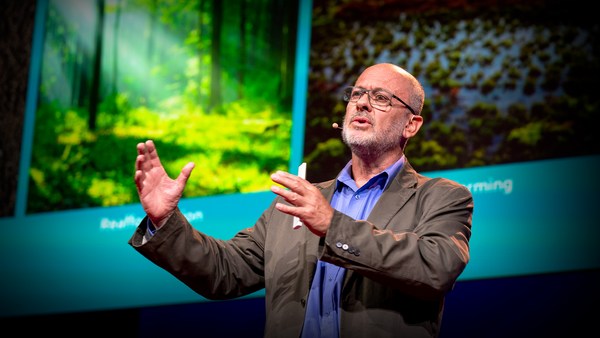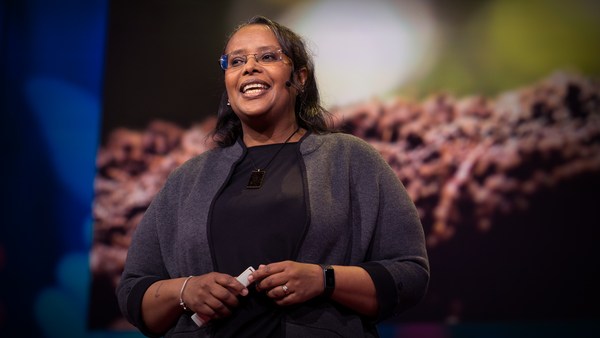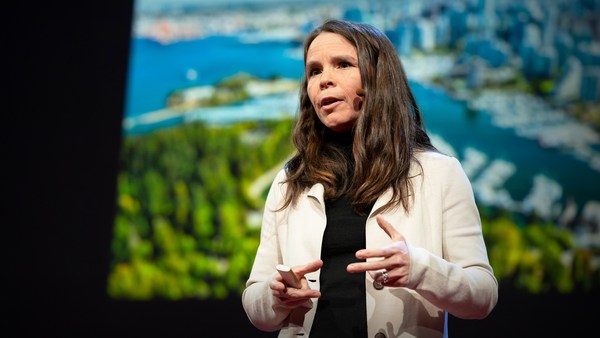To avoid dangerous climate change, we're going to need to cut emissions rapidly. That should be a pretty uncontentious statement, certainly with this audience. But here's something that's slightly more contentious: it's not going to be enough. We will munch our way through our remaining carbon budget for one and a half degrees in a few short years, and the two degree budget in about two decades. We need to not only cut emissions extremely rapidly, we also need to take carbon dioxide out of the atmosphere.
Thank you.
(Laughter)
I work assessing a whole range of these proposed techniques to see if they can work. We could use plants to take CO2 out, and then store it in trees, in the soil, deep underground or in the oceans. We could build large machines, so-called artificial trees, that will scrub CO2 from the air. For these ideas to be feasible, we need to understand whether they can be applied at a vast scale in a way that is safe, economic and socially acceptable. All of these ideas come with tradeoffs. None of them are perfect, but many have potential. It's unlikely that any one of them will solve it on its own. There is no silver bullet, but potentially together, they may form the silver buckshot that we need to stop climate change in its tracks.
I'm working independently on one particular idea which uses natural gas to generate electricity in a way that takes carbon dioxide out of the air. Huh? How does that work?
So the Origen Power Process feeds natural gas into a fuel cell. About half the chemical energy is converted into electricity, and the remainder into heat, which is used to break down limestone into lime and carbon dioxide.
Now at this point, you're probably thinking that I'm nuts. It's actually generating carbon dioxide. But the key point is, all of the carbon dioxide generated, both from the fuel cell and from the lime kiln, is pure, and that's really important, because it means you can either use that carbon dioxide or you can store it away deep underground at low cost. And then the lime that you produce can be used in industrial processes, and in being used, it scrubs CO2 out of the air. Overall, the process is carbon negative. It removes carbon dioxide from the air.
If you normally generate electricity from natural gas, you emit about 400 grams of CO2 into the air for every kilowatt-hour. With this process, that figure is minus 600. At the moment, power generation is responsible for about a quarter of all carbon dioxide emissions. Hypothetically, if you replaced all power generation with this process, then you would not only eliminate all of the emissions from power generation but you would start removing emissions from other sectors as well, potentially cutting 60 percent of overall carbon emissions.
You could even use the lime to add it directly to seawater to counteract ocean acidification, one of the other issues that is caused by CO2 in the atmosphere. In fact, you get more bang for your buck. You absorb about twice as much carbon dioxide when you add it to seawater as when you use it industrially.
But this is where it gets really complicated. While counteracting ocean acidification is a good thing, we don't fully understand what the environmental consequences are, and so we need to assess whether this treatment is actually better than the disease that it is seeking to cure. We need to put in place step-by-step governance for experiments to assess this safely.
And the scale: to avoid dangerous climate change, we are going to need to remove trillions -- and yes, that's trillions with a T -- trillions of tons of carbon dioxide from the atmosphere in the decades ahead. It will cost a few percent of GDP -- think defense-sized expenditure, lots of industrial activity and inevitably harmful side effects. But if the scale seems enormous, it is only because of the scale of the problem that we are seeking to solve. It's enormous as well.
We can no longer avoid these thorny issues. We face risks whichever way we turn: a world changed by climate change or a world changed by climate change and our efforts to counter climate change. Would that it were not so, but we can no longer afford to close our eyes, block our ears, and say la-la-la. We need to grow up and face the consequences of our actions.
(Applause)
Does talk of curing climate change undermine the will to cut emissions? This is a real concern, so we need to emphasize the paramount importance of reducing emissions and how speculative these ideas are. But having done so, we still need to examine them.
Can we cure climate change? I don't know, but we certainly can't if we don't try. We need ambition without arrogance. We need the ambition to restore the atmosphere, to draw down carbon dioxide back to a level that is compatible with a stable climate and healthy oceans.
This will be an enormous undertaking. You could describe it as a cathedral project. Those involved at the outset may draft the plans and dig the foundations, but they will not raise the spire to its full height. That task, that privilege, belongs to our descendants. None of us will see that day, but we must start in the hope that future generations will be able to finish the job.
So, do you want to change the world? I don't. I do not seek the change the world, but rather keep it as it's meant to be.
Thank you.
(Applause)
Chris Anderson: Thanks. I just want to ask you a couple of other questions. Tell us a bit more about this idea of putting lime in the ocean. I mean, on the face of it, it's pretty compelling -- anti-ocean acidification -- and it absorbs more CO2. You talked about, we need to do an experiment on this. What would a responsible experiment look like?
Tim Kruger: So I think you need to do a series of experiments, but you need to do them just very small stage-by-stage. In the same way, when you're trialing a new drug, you wouldn't just go into human trials straight off. You would do a small experiment. And so the first things to do are experiments entirely on land, in special containers, away from the environment. And then once you are confident that that can be done safely, you move to the next stage. If you're not confident, you don't. But step by step.
CA: And who would fund such experiments? Because they kind of impact the whole planet at some level. Is that why nothing is happening on this?
TK: So I think you can do small-scale experiments in national waters, and then it's probably the requirement of national funders to do that. But ultimately, if you wanted to counter ocean acidification in this way on a global scale, you would need to do it in international waters, and then you would need to have an international community working on it.
CA: Even in national waters, you know, the ocean's all connected. That lime is going to get out there. And people feel outraged about doing experiments on the planet, as we've heard. How do you counter that?
TK: I think you touch on something which is really important. It's about a social license to operate. And I think it may be that it is impossible to do, but we need to have the courage to try, to move this forward, to see what we can do, and to engage openly. And we need to engage with people in a transparent way. We need to ask them beforehand. And I think if we ask them, we have to be open to the possibility that the answer will come back, "No, don't do it."
CA: Thanks so much. That was really fascinating.
TK: Thank you. (Applause)





